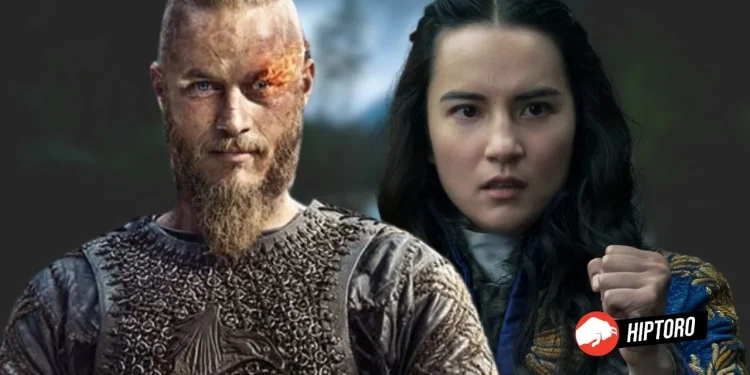In the wake of “Game of Thrones,” a television phenomenon that redefined fantasy storytelling, audiences have been on a relentless quest for shows that capture its essence—complex characters, intricate political plots, and a richly woven tapestry of mythologies. As we step into 2024, the appetite for series that blend dark fantasy, political intrigue, and epic storytelling continues to grow.
The legacy of “Game of Thrones” has paved the way for new narratives that promise to transport viewers to worlds where power struggles, moral ambiguity, and tales of heroism reign supreme. This guide explores the top 10 shows like “Game of Thrones” to watch in 2024, each promising to fill the void left by the behemoth of Westeros with their unique flavors of fantasy, drama, and intrigue.
Top 10 Best Shows like Game of Thrones to Watch in 2024
1. “The Witcher” – Continuing its journey through the Continent, “The Witcher” combines magic, monstrous battles, and complex political landscapes, inviting viewers into a world where destinies are intertwined.
2. “House of the Dragon” – A direct descendant of “Game of Thrones,” this prequel dives deep into the history of House Targaryen, exploring the dragonlords’ civil war, known as the Dance of the Dragons.
3. “The Wheel of Time” – Based on Robert Jordan’s epic fantasy series, this show weaves a rich tapestry of magic, power, and prophecy with a diverse cast of characters fighting to shape the world’s destiny.
4. “Shadow and Bone” – Set in a war-torn world plagued by dark magic, “Shadow and Bone” follows a young soldier who discovers a power that could unite her country but also attract formidable enemies.
5. “The Last Kingdom” – Offering a historical fantasy fix, this series focuses on the Viking Age, combining real historical figures and events with a touch of mythical storytelling.
6. “Vikings: Valhalla” – A sequel to “Vikings,” this show continues to explore Norse legends with epic battles and a deep dive into the adventures of the most famous Vikings who ever lived.
7. “His Dark Materials” – Based on Philip Pullman’s trilogy, the series navigates through multiple worlds, following young protagonists as they encounter magical beings and unravel cosmic secrets.
8. “The Mandalorian” – While rooted in the “Star Wars” universe, “The Mandalorian” offers a blend of fantasy and science fiction, focusing on the lone bounty hunter’s journey beyond the reaches of the New Republic.
9. “The Lord of the Rings: The Rings of Power” – Set thousands of years before the events of J.R.R. Tolkien’s “The Hobbit” and “The Lord of the Rings,” this series explores the creation of the Rings of Power and the rise of Sauron.
10. “Carnival Row” – This neo-noir fantasy series delves into a Victorian fantasy world where mythological immigrant creatures coexist with humans amidst a backdrop of social and political tension.
Each of these series offers a unique take on elements that fans loved about “Game of Thrones”: complex characters, expansive worlds, and narratives that blend personal ambition with broader historical or mythical stakes.
1. “The Witcher”: A Riveting Journey Through Magic, Monsters, and Destiny
In the pantheon of television shows that have captivated audiences with tales of fantasy, magic, and the eternal battle between good and evil, “The Witcher” has carved out its unique place. Based on the book series by Polish author Andrzej Sapkowski, “The Witcher” was thrust into the limelight as a game series before Netflix adapted it into a television saga that has enthralled viewers worldwide. As we venture into 2024, “The Witcher” stands as a beacon for fans seeking the depth of lore, character complexity, and epic storytelling that once defined “Game of Thrones.”
The World of “The Witcher”
“The Witcher” is set in a sprawling world known as the Continent, a land teeming with magic, ancient races, and monstrous creatures. At the heart of this world is Geralt of Rivia, portrayed by Henry Cavill, a Witcher who roams the Continent, slaying monsters for coin.
Witchers, through grueling training and body modification, are hunters endowed with supernatural abilities to battle the deadly beasts that lurk in the dark corners of the land.
However, “The Witcher” is much more than its battles and magic; it is a story about destiny, the complexities of morality, and the search for identity in a world fraught with political intrigue and social decay.
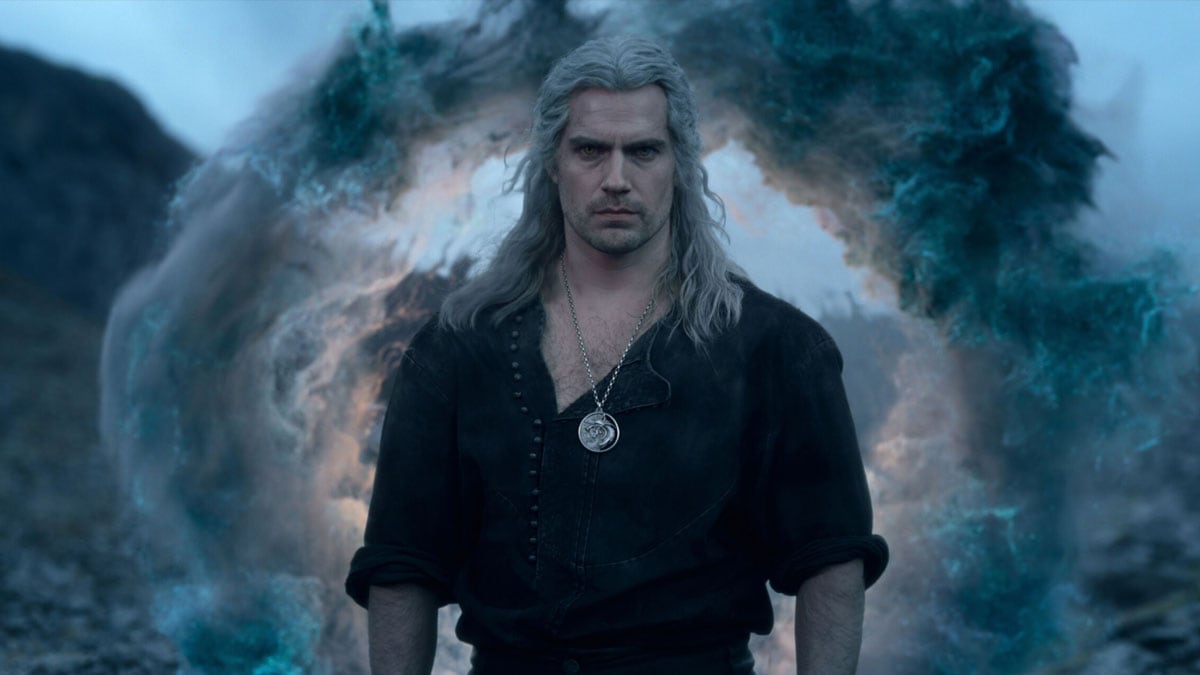
Narrative and Themes
What sets “The Witcher” apart from other fantasy series is its narrative structure and thematic depth. The show masterfully weaves together the fates of three main characters: Geralt, Yennefer of Vengerberg, a powerful sorceress with a tumultuous past, and Ciri, a young princess with a mysterious destiny.
Their paths cross in unexpected ways against the backdrop of a world on the brink of chaos. The series delves into themes of destiny, the nature of good and evil, and the impact of personal choices on the wider world. It challenges viewers to question the nature of the monsters it portrays, often blurring the lines between human and beast, and to reflect on the true source of monstrosity in its world.
Visuals and Performance
“The Witcher” is a visual spectacle, with stunning landscapes, intricate costumes, and spellbinding special effects that bring its fantastical creatures to life. The Continent feels vast and untamed, a character in its own right, setting the stage for the epic narrative to unfold.
Henry Cavill’s portrayal of Geralt has been praised for its depth and authenticity. Cavill, a fan of the book and game series, brings a nuanced understanding of the character, balancing Geralt’s stoic exterior with moments of vulnerability. The supporting cast, including Anya Chalotra as Yennefer and Freya Allan as Ciri, deliver compelling performances that add depth to their complex characters.
Impact and Legacy
As we look towards 2024, “The Witcher” continues to be a touchstone for high-quality fantasy storytelling. Its success has not only expanded the franchise but also reignited interest in the source material, introducing new fans to the rich lore of the Witcher universe.
The show’s ability to blend action-packed sequences with deep, character-driven storytelling has set a new standard for fantasy television, offering a worthy successor to the legacy of “Game of Thrones.”

In conclusion, “The Witcher” represents the pinnacle of fantasy television, captivating audiences with its rich narrative, complex characters, and thematic depth. As it continues to unravel the destinies of Geralt, Yennefer, and Ciri, “The Witcher” promises to keep viewers enthralled with its tale of magic, monsters, and the power of destiny.
2. “House of the Dragon”: Reigniting the Fire of Westeros
In the aftermath of “Game of Thrones,” fans were left yearning for more tales from the rich and tumultuous world of Westeros. Answering this call, “House of the Dragon” takes viewers back in time to explore the golden age of House Targaryen, setting the stage for an epic saga that intertwines destiny, power, and the inescapable dance of dragons.
As we venture into 2024, “House of the Dragon” emerges as not just a prequel but as a pivotal continuation of the lore that captivated millions, offering new depths to the familiar world of George R.R. Martin’s creation.
The Targaryen Legacy
Set nearly 200 years before the events of “Game of Thrones,” “House of the Dragon” focuses on the Targaryen dynasty at the height of its power, with dragons soaring the skies of Westeros. This era, known as the Dance of the Dragons, marks a civil war that threatens to tear the realm apart, pitting Targaryen against Targaryen in a struggle for the Iron Throne. The show promises to delve deep into the complexities of power, lineage, and the burdens of legacy, exploring how the seeds of the Targaryens’ eventual downfall were sown.
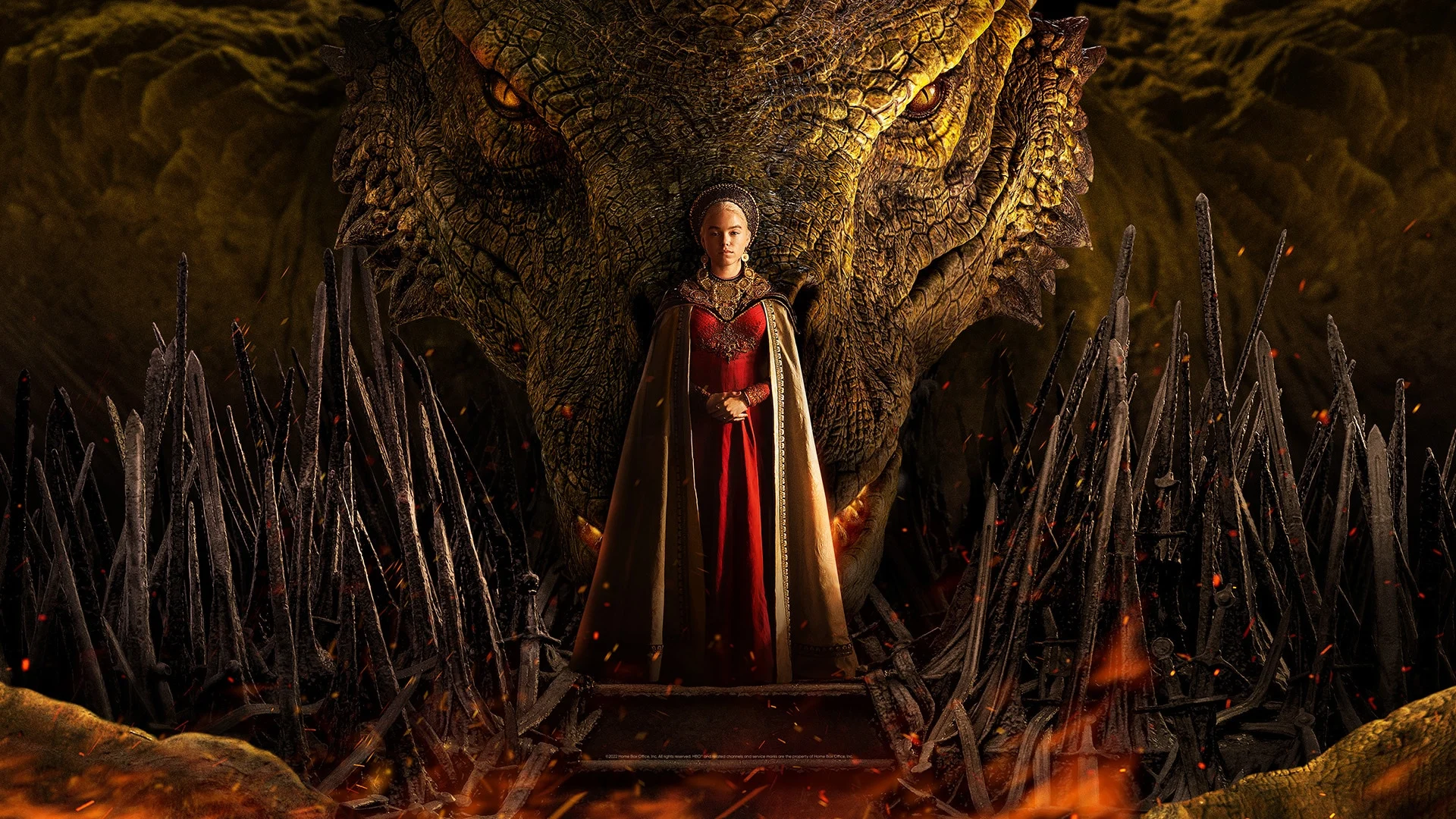
Characters and Conflicts
“House of the Dragon” introduces a new ensemble of characters, each vying for power, loyalty, and survival. Among them are King Viserys Targaryen, a ruler caught between his duty to his House and his love for his family, and Princess Rhaenyra Targaryen, his firstborn daughter, and a dragon rider, who finds herself at the center of the succession crisis. The show also highlights the ambitions of Prince Daemon Targaryen, a formidable warrior and Rhaenyra’s uncle, whose desires for the throne spark internal and external conflicts. These characters, along with a host of others, navigate the treacherous political landscape of Westeros, where alliances are fragile and betrayal is a common currency.
Visuals and Storytelling
Building on the legacy of “Game of Thrones,” “House of the Dragon” boasts breathtaking visuals, from the majestic dragons that dominate the skies to the intricate designs of the courts and battlefields of Westeros. The series takes full advantage of advancements in visual effects to bring to life the awe-inspiring power and beauty of the dragons, central to the Targaryen identity and crucial to the unfolding drama. Moreover, the storytelling retains the intricate plotting, rich character development, and moral complexity that were hallmarks of its predecessor, promising a deep dive into the ambitions, fears, and desires that drive its characters.
Legacy and Anticipation
“House of the Dragon” is more than a prequel; it is a testament to the enduring appeal of the world George R.R. Martin created. It offers fans a new lens through which to view the history of Westeros, providing context and depth to the events that would eventually lead to the War of the Five Kings. The anticipation for the series speaks to the hunger for stories that combine political intrigue, personal drama, and the fantastical elements that define the genre.

In 2024, “House of the Dragon” stands as a beacon for fans of “Game of Thrones,” offering a fresh perspective on the lore of Westeros while adhering to the storytelling prowess that made the original series a landmark in television history. As the dragons rise, so does the excitement for this new chapter in the saga of ice and fire, promising to reignite the passion of fans and welcome newcomers to the enthralling world of Westeros.
3. “The Wheel of Time”: Weaving Destiny and Magic into the Fabric of Television
As we delve into the realms of epic fantasy television in 2024, “The Wheel of Time” emerges as a monumental series, adapting Robert Jordan’s sprawling and beloved series of novels. This show invites viewers into a meticulously crafted world where the fabric of reality is woven by the Wheel of Time, dictating the cycle of ages and the destinies of its inhabitants. In a landscape still thirsting for the depth and complexity that “Game of Thrones” delivered, “The Wheel of Time” stands as a beacon of storytelling, blending magic, myth, and the timeless struggle between light and darkness.
A Rich Tapestry of World-Building
At the heart of “The Wheel of Time” is its vast, immersive world, where the magic system known as the One Power shapes civilizations, cultures, and conflicts. The series sets its stage in a richly diverse universe, where the echoes of past ages influence the present, and prophecies foretell the emergence of the Dragon Reborn—a figure destined to either save the world from the Shadow or doom it to destruction. Through its expansive narrative, the show explores themes of destiny, power, and the moral complexities of using magic as its characters navigate a world fraught with political intrigue and ancient evils.
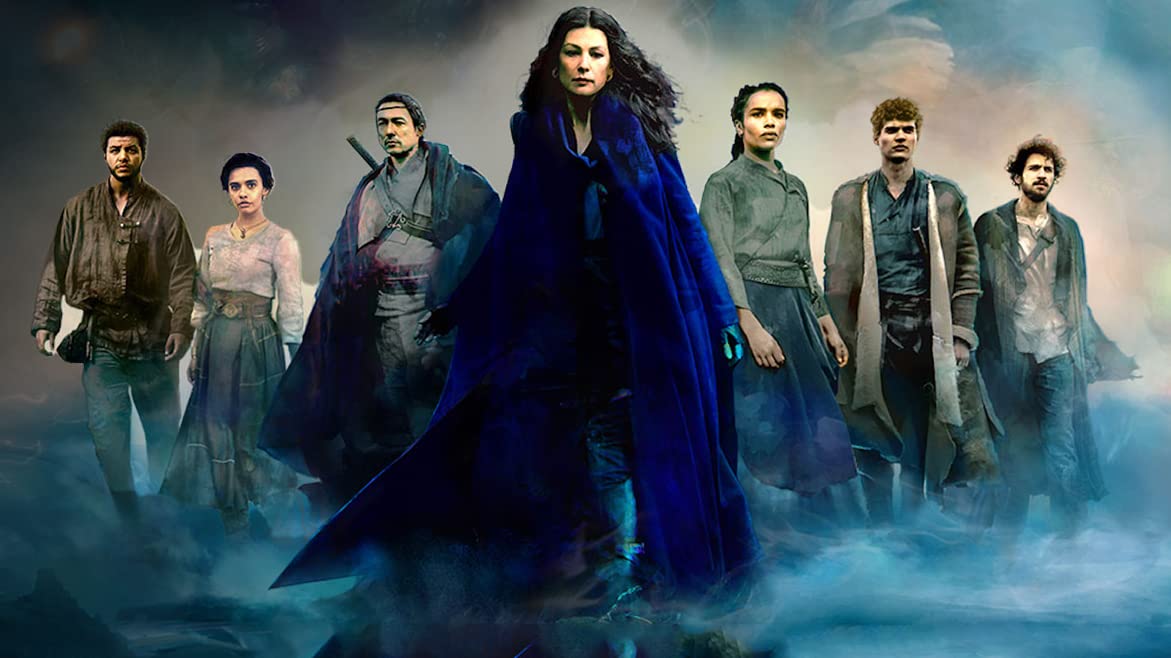
The Quest of the Dragon Reborn
Central to the narrative is Rand al’Thor, a young man from the small town of Emond’s Field, who is thrust into the larger world when he and his friends are believed to be linked to the prophecies of the Dragon Reborn. Accompanied by the mysterious Moiraine, a member of the powerful Aes Sedai, and her Warder, Lan, Rand’s journey is one of self-discovery, fraught with danger, alliances, and betrayal. The series adeptly balances the personal growth of its characters with the overarching threat of the Dark One, weaving individual stories into the larger tapestry of the world’s fate.
Character Depth and Diversity
What sets “The Wheel of Time” apart is its commitment to character diversity and development. The series boasts a sprawling cast, representing a wide range of cultures, beliefs, and perspectives, mirroring the complexity of the real world. Each character, from the determined Egwene al’Vere to the complex Mat Cauthon, is given a depth that drives the narrative forward, creating a rich mosaic of human experience. This focus on character, combined with the intricate plot and world-building, enriches the storytelling, making “The Wheel of Time” a standout in the realm of fantasy television.
Visual Splendor and Narrative Fidelity
Visually, “The Wheel of Time” is a spectacle, bringing to life the series’ iconic locations, from the wind-swept plains of the Aiel Waste to the majestic halls of Tar Valon. The magic of the One Power is rendered with stunning detail, capturing the awe and danger that comes with wielding the essence of creation.
The show’s creators have taken great care to remain faithful to the source material while also adapting its depth and complexity for television, striking a balance that honours Robert Jordan’s vision while making the story accessible to new audiences.

In 2024, “The Wheel of Time” not only fills the void left by “Game of Thrones” but also carves out its own legacy in the landscape of fantasy television. With its rich world-building, complex characters, and a story that explores the very nature of destiny and power, “The Wheel of Time” is a journey through a world as vast and detailed as the Wheel itself—a narrative cycle where the past informs the present and the future is an unwritten page.
4. “Shadow and Bone”: Illuminating the Darkness with Magic and Morality
“Shadow and Bone,” based on Leigh Bardugo’s Grishaverse novels, emerges as a compelling entry in the fantasy genre, particularly in the post-Game of Thrones” era where viewers crave narratives rich with magic, moral ambiguity, and complex world-building. As we step into 2024, “Shadow and Bone” distinguishes itself by weaving a tale that not only explores the darkness outside but also the shadows within its characters, setting a new standard for storytelling that is as much about internal battles as external conflicts.
A World Divided by Darkness
The series is set in a war-torn world, where the Kingdom of Ravka is bisected by a monstrous veil of darkness known as the Shadow Fold, home to terrifying creatures that prey on humans. This division creates a stark contrast between the countries and peoples, setting the stage for a story that is deeply entrenched in themes of division, unity, and the quest for power. The Shadow Fold serves as a physical and metaphorical barrier, a challenge that protagonist Alina Starkov, a young soldier, must face head-on after she discovers her extraordinary power that could be the key to their world’s salvation.
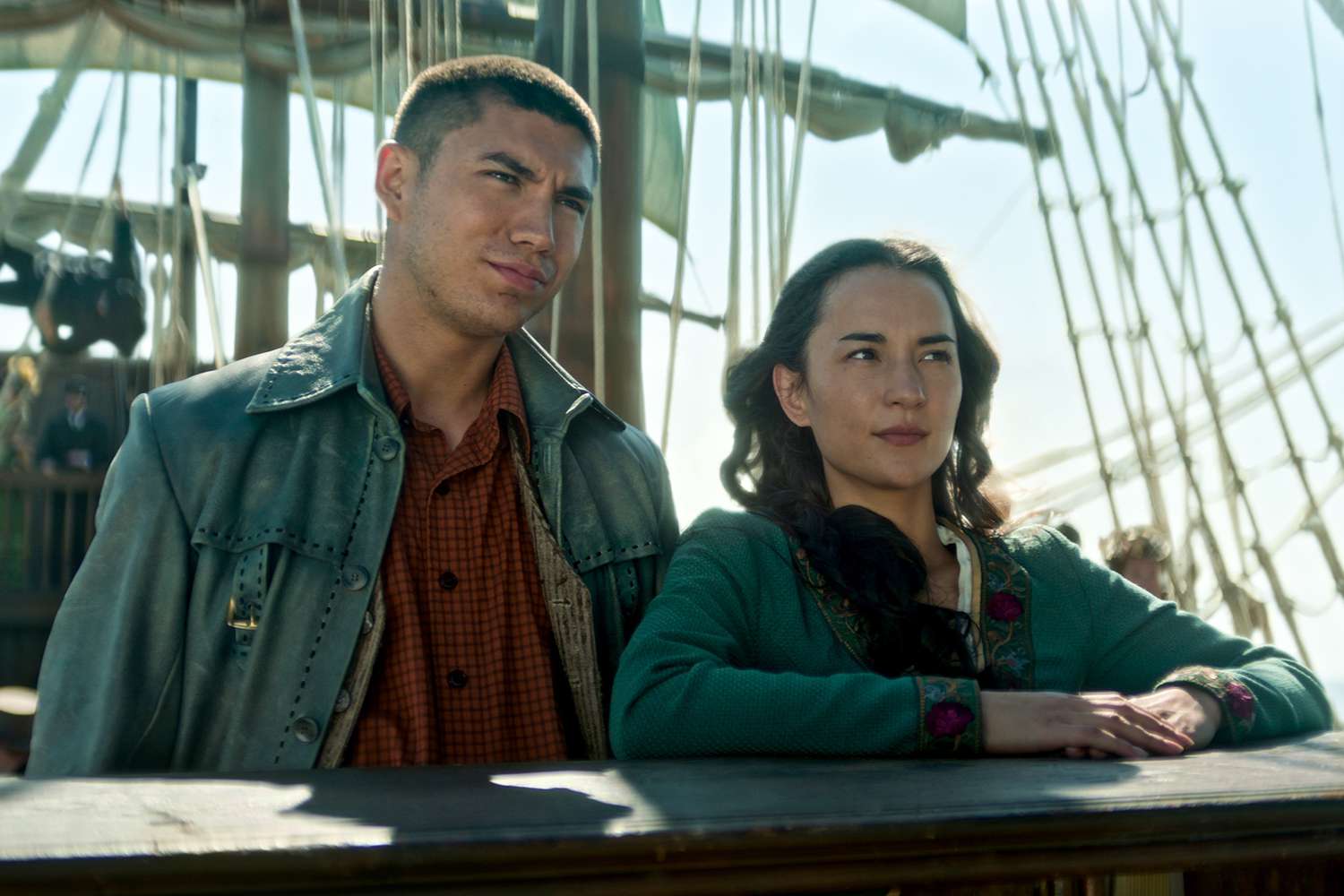
The Journey of Alina Starkov
Alina’s journey from obscurity to being hailed as a saint-like figure, the Sun Summoner, forms the core narrative arc of “Shadow and Bone.” Her ability to summon light, capable of destroying the Fold, places her at the centre of political and magical intrigue. The series delves into Alina’s struggle to harness her power, navigate her newfound status, and understand her place in a world where allegiances are as shifting as the sands in the Fold. Her character development is intricately tied to the broader themes of identity, belonging, and the nature of power itself.
The Grisha: Magic and Morality
“Shadow and Bone” introduces viewers to the Grisha, practitioners of the Small Science who can manipulate the natural elements. This magical elite, with their strict hierarchy and distinct powers, adds a rich layer to the series, exploring how those with power choose to wield it. The moral complexities of using such power, for personal gain or the greater good, are a constant undercurrent, providing a nuanced exploration of the responsibilities that come with great strength.
Visual Splendor and Narrative Depth
Visually, “Shadow and Bone” is a masterpiece, skillfully bringing to life the contrasting landscapes of Ravka, from the opulence of the royal court to the bleakness of the Fold. The use of light and darkness, both literally and metaphorically, enhances the storytelling, emphasizing the series’ themes of hope, redemption, and the struggle against overwhelming odds. The adaptation carefully balances the source material’s rich lore with the need for a cohesive narrative, ensuring both fans of the novels and newcomers are captivated by the tale of Alina Starkov and the world of the Grisha.

In the landscape of 2024’s television offerings, “Shadow and Bone” stands out for its ability to blend high fantasy with deep, character-driven storytelling. It offers viewers a journey into a beautifully crafted world where the battle against darkness is waged not just on the battlefield but within the hearts of its characters. As the series unfolds, it promises to continue challenging its characters and its audience, to look beyond the darkness and find the light within.
5. “The Last Kingdom”: A Tapestry of Loyalty, Identity, and the Quest for Power
In an era where high fantasy and grand mythologies dominate the television landscape, “The Last Kingdom” distinguishes itself with a gritty realism and historical depth that echoes the complexities of “Game of Thrones.” As we navigate the offerings of 2024, this series continues to captivate audiences with its riveting blend of historical events and fictionalized drama, set against the backdrop of the Viking Age. “The Last Kingdom” not only offers thrilling battle scenes and political intrigue but delves into the personal journey of identity, loyalty, and the relentless pursuit of power.
The Confluence of History and Fiction
At the heart of “The Last Kingdom” is Uhtred of Bebbanburg, a character born of Saxon nobility but raised by Vikings. This duality forms the core of Uhtred’s identity and drives much of the series’ narrative. Set during the turbulent times when Viking invaders and the kingdoms of England fought for dominance, Uhtred’s allegiance is constantly tested. The show masterfully navigates these historical tensions, bringing to life the struggles that shaped the nation’s destiny. Through Uhtred’s eyes, viewers are treated to a nuanced portrayal of the era, one that respects historical events while weaving in fictional narratives that highlight the human experience amidst warfare and political machinations.
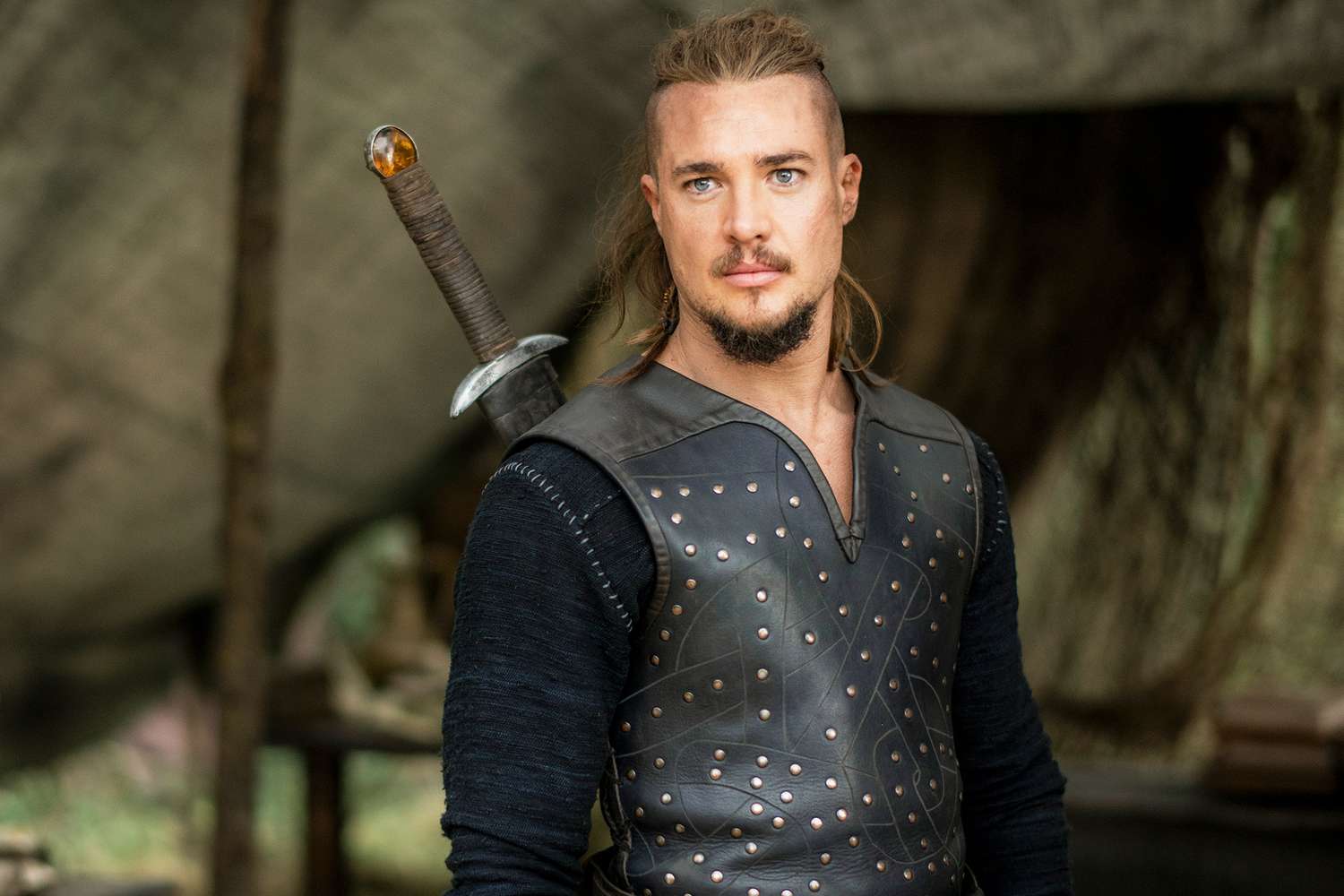
Themes of Loyalty and Identity
“The Last Kingdom” excels in exploring themes of loyalty and identity, as Uhtred balances his Viking upbringing with his Saxon heritage. His journey is a compelling exploration of what it means to belong and the sacrifices one must make in pursuit of one’s destiny. The series adeptly showcases the complexities of loyalty in a time when allegiances were often a matter of survival. Uhtred’s relationships with both Saxons and Vikings provide a rich tapestry of interactions, showcasing the series’ deep character development and the personal dilemmas faced by those caught between conflicting worlds.
A World of Brutal Realism
One of the defining features of “The Last Kingdom” is its commitment to a realistic portrayal of the Viking Age. Unlike shows that lean heavily into the fantasy elements of their settings, “The Last Kingdom” grounds itself in the brutality and beauty of the era it depicts. The battle scenes are visceral, the political intrigue is steeped in historical practices, and the daily life of the characters reflects the harsh realities of the time. This adherence to realism enhances the narrative’s impact, making the stakes higher and the characters’ victories and losses more poignant.
Legacy and Impact
As “The Last Kingdom” continues to unfold in 2024, its legacy is secured by its ability to blend historical accuracy with compelling storytelling. The series not only educates its audience about a pivotal period in history but does so through the lens of deeply human stories of struggle, ambition, and the search for identity. In this way, it stands as a testament to the enduring appeal of stories that, while set in the distant past, reflect the universal challenges of the human condition.

“The Last Kingdom” offers a unique perspective in the realm of television, one where the lines between history and fiction blur to reveal the underlying truths of our shared past. As viewers follow Uhtred’s quest to reclaim his birthright, they are also invited to ponder the larger questions of loyalty, identity, and what it truly means to wield power.
6. “Vikings: Valhalla”: Navigating a New Era of Norse Legends
As the torchbearer of its predecessor’s legacy, “Vikings: Valhalla” sails into the hearts of viewers with a bold reimagining of Norse history, intertwining legendary tales with the visceral reality of Viking life. In the landscape of 2024’s television offerings, where audiences crave narratives rich in historical depth and epic storytelling, “Vikings: Valhalla” stands out as a series that not only pays homage to the saga of its forebears but also charts new territories in the exploration of Viking lore and legacy.
A New Chapter in Viking History
Set a century after the events of “Vikings,” “Vikings: Valhalla” ushers in a new era, focusing on the exploits of the most famous Vikings who ever lived. The series introduces viewers to legendary figures such as Leif Erikson, Freydis Eiriksdottir, Harald Hardrada, and William the Conqueror—each carving their path in a world on the brink of the Viking Age’s twilight. This period, marked by the clash between pagan beliefs and the rising tide of Christianity, provides a rich backdrop for the series, allowing for a deep dive into the cultural and religious transformations that defined the era.
Themes of Exploration and Identity
“Vikings: Valhalla” excels in capturing the spirit of exploration and the relentless pursuit of glory that characterized Viking society. The series delves into the motivations that drove these warriors to sail unknown seas, conquer foreign lands, and seek their place in Valhalla. Through the journeys of its protagonists, the show explores themes of identity, faith, and the struggle for power in a changing world. The clash of cultures and religions, in particular, catalyzes much of the series’ drama, highlighting the challenges and conflicts that arise from such encounters.
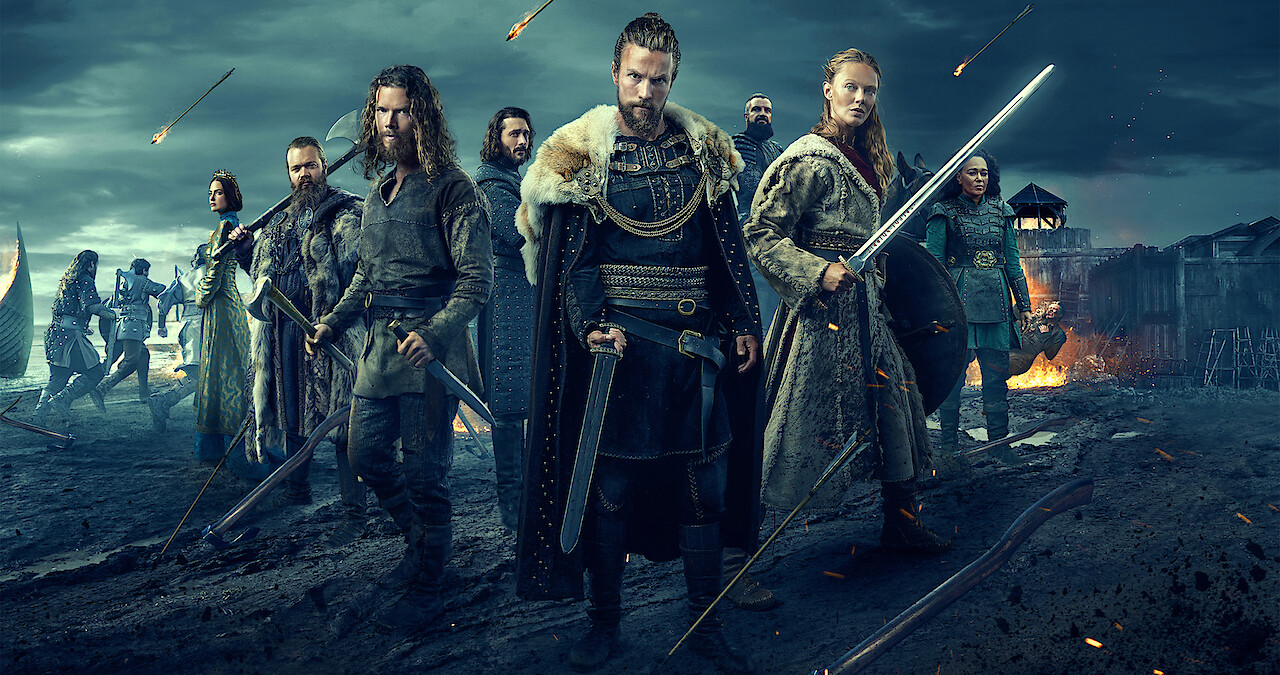
Character Dynamics and Political Intrigue
At the heart of “Vikings: Valhalla” are the dynamic relationships and political intrigue that drive the narrative forward. The series does not shy away from the complexities of its characters, who are often caught between personal ambitions, loyalty to their kin, and the demands of their evolving world.
This nuanced approach to character development ensures that the heroes and villains of the series are not defined by simple binaries but are instead shaped by a combination of choice, circumstance, and destiny.
The intricate web of alliances, betrayals, and power struggles that unfolds is reminiscent of the political machinations that fans appreciated in “Game of Thrones.”
A Visual and Emotional Journey
Visually, “Vikings: Valhalla” is a feast for the eyes, with breathtaking landscapes, authentic set designs, and stunning battle sequences that bring the Viking world to life. The series goes to great lengths to authentically portray the era, from the construction of Viking ships to the depiction of Norse rituals.
This attention to detail, combined with a compelling score that evokes the majesty and mystery of the North, immerses viewers in a world that is at once brutal and beautiful.

In 2024, “Vikings: Valhalla” continues to capture the imagination of audiences worldwide, offering a fresh perspective on Viking history and mythology.
Through its exploration of legendary figures and pivotal moments in Norse history, the series invites viewers on a journey that is as much about the external conquests of its characters as it is about their internal battles.
As “Vikings: Valhalla” sails into new narrative horizons, it reaffirms the enduring appeal of stories that celebrate the human spirit’s capacity for exploration, resilience, and the quest for identity in a changing world.
7. “His Dark Materials”: A Journey Through Worlds of Wonder and Wisdom
As the television landscape continues to evolve, “His Dark Materials” stands out as a beacon of imaginative storytelling and profound thematic exploration. Adapted from Philip Pullman’s critically acclaimed trilogy, this series embarks on an ambitious journey across multiple worlds, where every human’s soul manifests as a talking animal companion known as a dæmon. As we delve into 2024, “His Dark Materials” not only captivates audiences with its visual splendor but also engages them in a deep contemplation of freedom, authority, and the nature of the universe.
A Richly Woven Narrative Tapestry
At the core of “His Dark Materials” is the story of Lyra Belacqua, a young girl who finds herself on a perilous journey to uncover a sinister plot involving stolen children and a mysterious substance known as Dust.
Alongside Will Parry, a boy from our world with a destiny intertwined with hers, Lyra travels through different universes, meeting a host of characters, both ally and foe.
The narrative is a masterful blend of adventure, mystery, and philosophical inquiry, inviting viewers to ponder profound questions about existence, knowledge, and the power structures that govern societies.
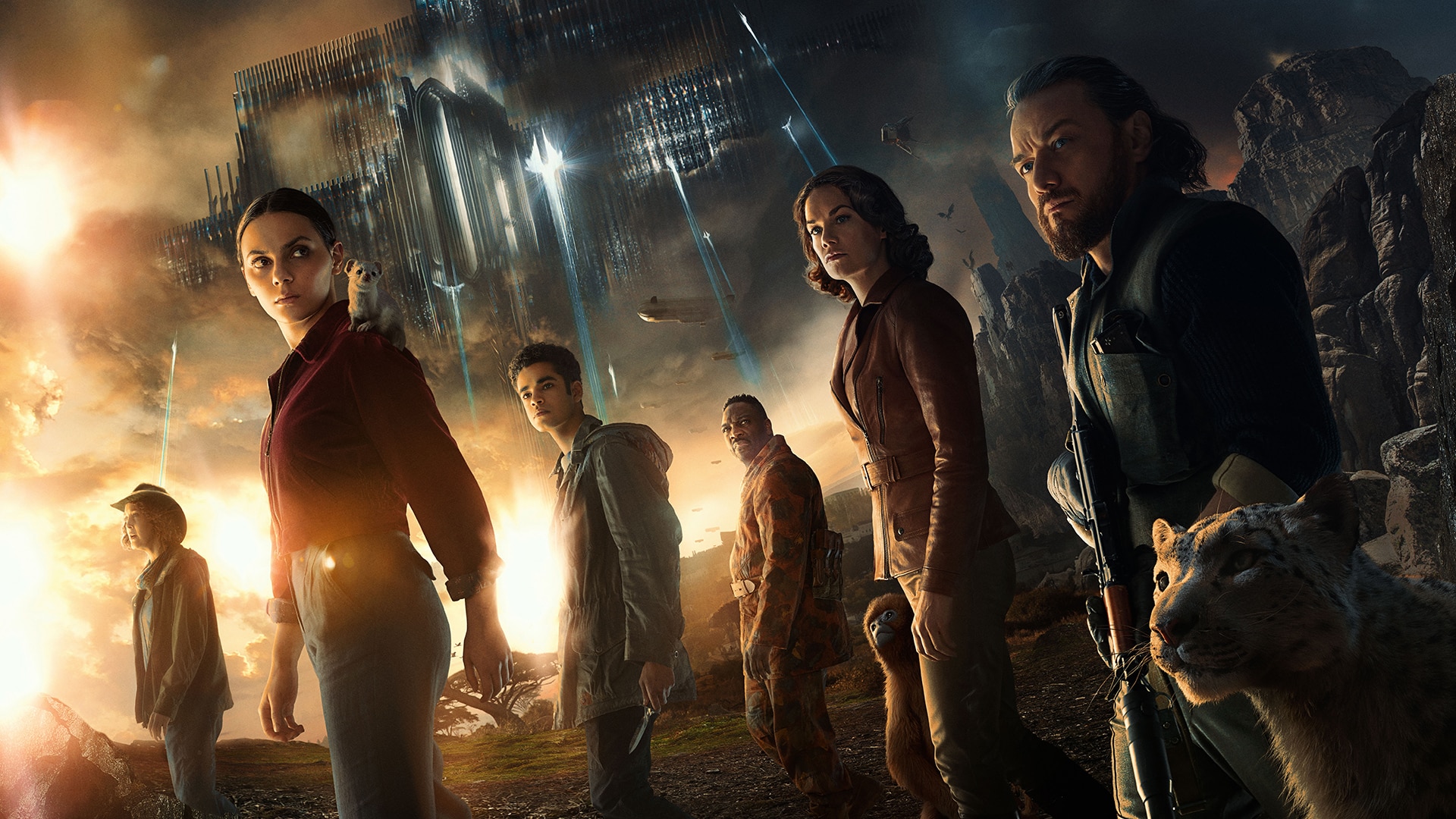
Themes of Authority and Rebellion
One of the most compelling aspects of “His Dark Materials” is its exploration of authority, particularly in the form of the Magisterium, a powerful theocracy that seeks to control knowledge and suppress heresy. The series challenges viewers to consider the implications of unchecked power and the importance of questioning and resisting those who seek to dictate the truth. Through Lyra and Will’s journey, the story celebrates the spirit of inquiry and the courage to challenge dogma, themes that resonate deeply in our contemporary world.
Complex Characters and Moral Ambiguity
“His Dark Materials” excels in its portrayal of complex characters who inhabit moral grey areas, making the series a rich tapestry of human experience. From the fiercely intelligent and manipulative Mrs. Coulter to the brave and compassionate Lee Scoresby, the characters are deeply flawed yet intensely relatable. Their relationships and conflicts drive the narrative forward, offering viewers a nuanced perspective on the nature of good and evil. The dæmons, as extensions of the characters’ souls, provide a unique window into their inner lives, enhancing the emotional depth of the story.
Visual and Emotional Impact
The series is a visual masterpiece, with stunning depictions of the various worlds Lyra and Will navigate. From the icy landscapes of the North to the haunting beauty of the city of Cittàgazze, the settings are brought to life with meticulous detail and artistry. The CGI-rendered dæmons and other fantastical elements are seamlessly integrated, creating a world that is immersive and believable. Coupled with a compelling score that underscores the emotional and thematic currents of the story, “His Dark Materials” is a feast for the senses and the mind.

As “His Dark Materials” unfolds in 2024, it continues to enchant and challenge its audience, affirming its place as a standout series in the realm of speculative fiction. With its blend of high adventure, intellectual rigor, and emotional resonance, the series invites viewers on a journey that is as thrilling as it is thought-provoking. In the landscape of modern television, “His Dark Materials” shines as a testament to the power of storytelling to explore the deepest questions of human existence.
8. “The Mandalorian”: A New Legacy in the Star Wars Universe
In the vast expanse of the Star Wars universe, “The Mandalorian” has carved out its unique place, blending the familiar with the uncharted to create a series that feels both nostalgic and refreshingly new. Since its debut, the show has become a cornerstone of the Star Wars saga, offering fans a deep dive into the lore and landscapes that have captivated audiences for decades. As we look ahead to 2024, “The Mandalorian” continues to expand the boundaries of the galaxy far, far away, inviting viewers on a journey through the outer reaches of space with the titular character and his now-iconic companion, Grogu.
A Story of Bonds and Battles
At its heart, “The Mandalorian” is a tale of the bond between the Mandalorian, Din Djarin, and Grogu, a child of the same species as Yoda with similar formidable powers. This relationship, evolving from protector and ward to something much deeper, anchors the series amidst its episodic adventures through the galaxy’s criminal underworld and the remnants of the Empire.
The show masterfully balances intense action sequences with quieter moments of connection, exploring themes of identity, honour, and the concept of a family forged by choice rather than blood.
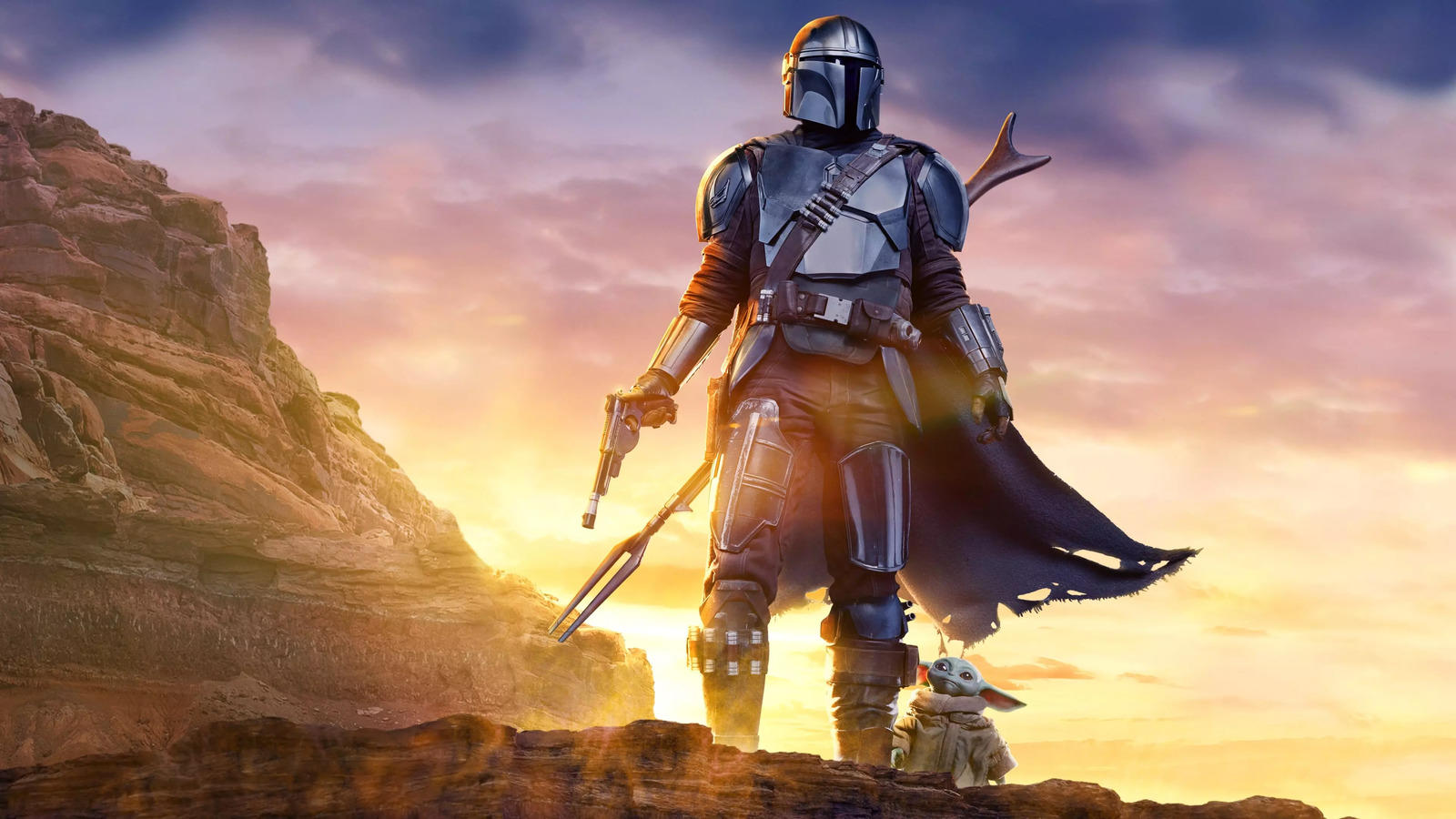
Expanding the Star Wars Lore
“The Mandalorian” shines in its expansion of the Star Wars lore, delving into the culture and traditions of the Mandalorians, a warrior people with a rich history within the universe. The series introduces audiences to new planets, creatures, and factions, while also revisiting familiar elements from both the films and animated series. This blending of the old and new enriches the Star Wars tapestry, providing depth to the galaxy’s political and social dynamics post-Empire’s fall.
A Visual and Cinematic Achievement
Visually, “The Mandalorian” is a feast for the eyes, utilizing cutting-edge technology such as the StageCraft virtual production system to create immersive and dynamic environments. This innovative approach allows for a cinematic quality that is both visually stunning and narratively engaging, setting a new standard for television production. The series’ commitment to practical effects and detailed set designs pays homage to the original Star Wars trilogy’s pioneering spirit, bridging the gap between generations of fans.
Cultural Impact and Legacy
“The Mandalorian” has transcended its role as a television series to become a cultural phenomenon, introducing the wider public to the concept of “This is the way”—a mantra that encapsulates the Mandalorian code. Grogu, affectionately known by fans as “Baby Yoda,” has become an icon in his own right, symbolizing the series’ ability to capture hearts across the globe. The show’s success has paved the way for multiple spin-offs and has reinvigorated interest in the Star Wars universe, proving that there are still untold stories worth exploring within this epic saga.

As we continue through 2024, “The Mandalorian” remains a testament to the enduring appeal of the Star Wars universe, offering a blend of action, heart, and a deep reverence for the lore that has defined the franchise. With each episode, it builds upon the legacy of Star Wars, inviting old fans and new to explore the complexities of a galaxy far, far away, through the helmeted gaze of its lone bounty hunter and his endearing companion.
9. “The Lord of the Rings: The Rings of Power”: An Epic Prelude to Middle-earth
In the ever-expanding universe of fantasy television, “The Lord of the Rings: The Rings of Power” stands as a monumental achievement, inviting viewers back to the beloved realm of Middle-earth. This series, set thousands of years before the events of J.R.R. Tolkien’s “The Hobbit” and “The Lord of the Rings,” explores the forging of the iconic Rings of Power and the rise of the dark lord Sauron. As we embark on this journey in 2024, “The Rings of Power” not only pays homage to Tolkien’s rich legacy but also expands upon it, offering new stories and insights into a world brimming with mythology, magic, and the eternal struggle between light and darkness.
Exploring the Second Age of Middle-earth
“The Rings of Power” delves deep into the Second Age of Middle-earth, a time of relative peace that slowly unravels into darkness with the re-emergence of evil. This era provides a sprawling canvas for storytelling, encompassing the rise of the elven kingdoms, the downfall of Númenor, and the first alliances between Men and Elves. By exploring these untold stories, the series enriches the lore of Middle-earth, offering viewers a glimpse into the events that shaped the world known from the later tales of Frodo and Aragorn.
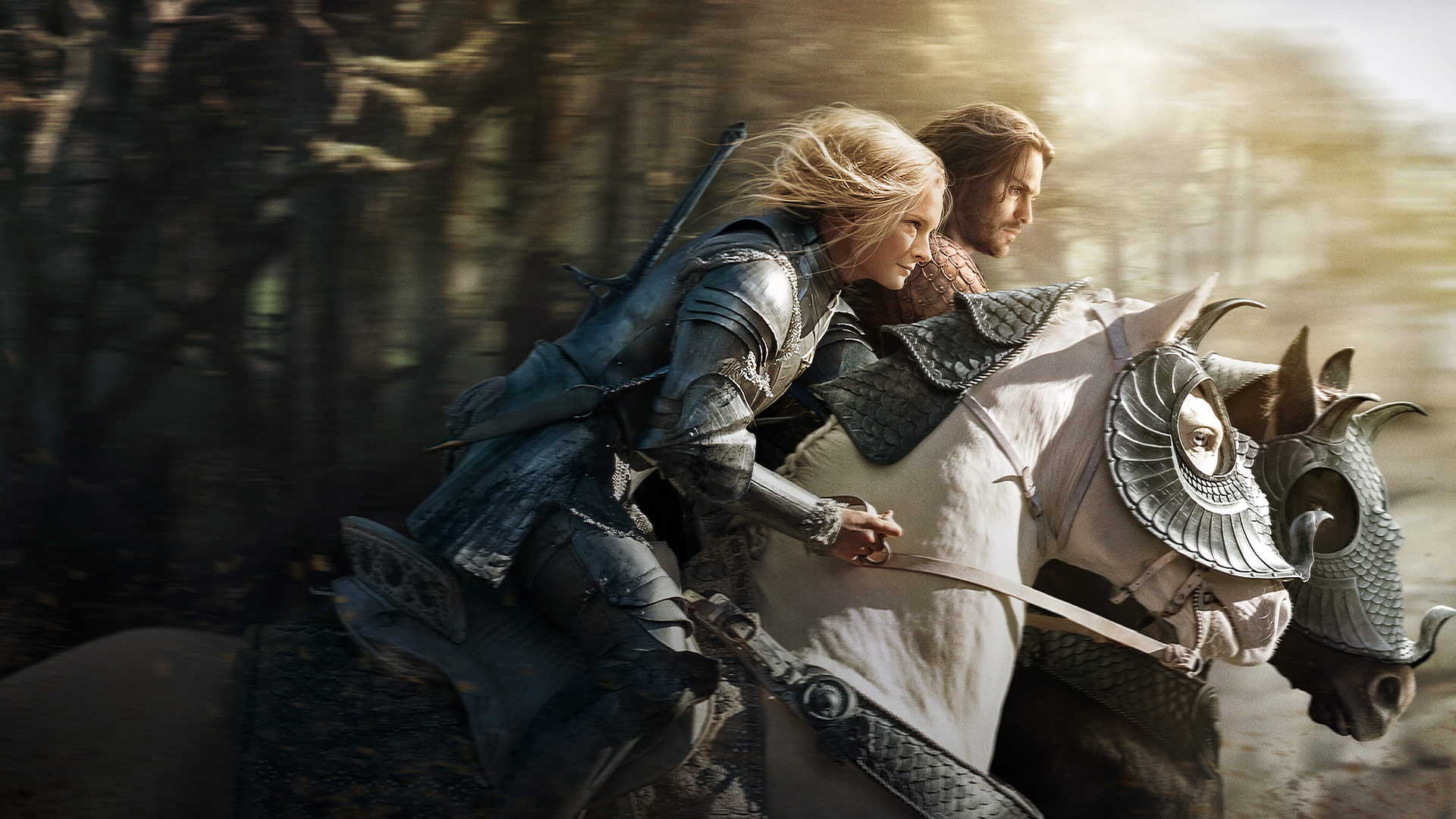
A Tapestry of Characters and Cultures
At the heart of “The Rings of Power” is a diverse cast of characters, from familiar faces such as Galadriel and Elrond to new figures unique to the series. These characters, each with their ambitions, fears, and loyalties, navigate the complexities of Middle-earth as darkness begins to stir.
The show’s portrayal of the various cultures of Middle-earth—from the majestic realms of the Elves to the burgeoning societies of Men—provides a rich exploration of Tolkien’s world, showcasing the beauty and diversity of its inhabitants.
Visual Splendor and Narrative Depth
Visually, “The Rings of Power” is a masterpiece, capturing the breathtaking landscapes and intricate architecture of Middle-earth with stunning detail. The use of state-of-the-art special effects brings to life the magic and majesty of Tolkien’s world, from the ethereal beauty of the Elven realms to the stark majesty of Númenor.
Alongside these visuals, the narrative weaves a complex tapestry of stories, each contributing to the overarching saga of the Rings of Power and the inevitable rise of Sauron. This blend of visual storytelling and narrative depth ensures that each episode is both a feast for the eyes and a profound exploration of themes such as power, corruption, and redemption.
Legacy and Anticipation
As “The Rings of Power” unfolds, it continues to captivate and inspire, breathing new life into the legends of Middle-earth. The series not only serves as a prelude to the beloved tales of the Third Age but also stands on its own as a compelling exploration of the themes and stories that are at the heart of Tolkien’s work.
For longtime fans and newcomers alike, “The Rings of Power” offers a journey back to a world where heroism, hope, and the power of unity stand as beacons against the encroaching darkness.

In 2024, “The Lord of the Rings: The Rings of Power” reaffirms the timeless appeal of Middle-earth, inviting viewers to witness the dawn of an era that would forever shape the fate of this magical world.
As the series continues to unveil the mysteries of the Second Age, it promises to remain a landmark in the landscape of fantasy television, a testament to the enduring legacy of J.R.R. Tolkien’s imagination.
10. “Carnival Row”: A Neo-Noir Fantasy in the Shadows of the Victorian Age
In the sprawling landscape of fantasy television, “Carnival Row” offers a unique blend of Victorian aesthetics, mythical creatures, and a gritty neo-noir storyline. Set against the backdrop of a bustling metropolis where humans and mythological beings coexist in fragile harmony, the series delves into themes of immigration, social segregation, and the quest for justice. As we explore the offerings of 2024, “Carnival Row” stands out for its bold storytelling, rich world-building, and the way it mirrors contemporary societal issues through the lens of fantasy.
A World of Beauty and Prejudice
“Carnival Row” introduces viewers to The Burgue, a city teeming with humans and mythological immigrants known as fae, forced from their war-torn homelands. This setting, reminiscent of Victorian London, is both beautiful and bleak, encapsulating the contradictions of the era. The show skillfully uses its fantasy setting to explore real-world issues such as xenophobia, class disparity, and the struggle for equal rights, making the narrative both compelling and thought-provoking.
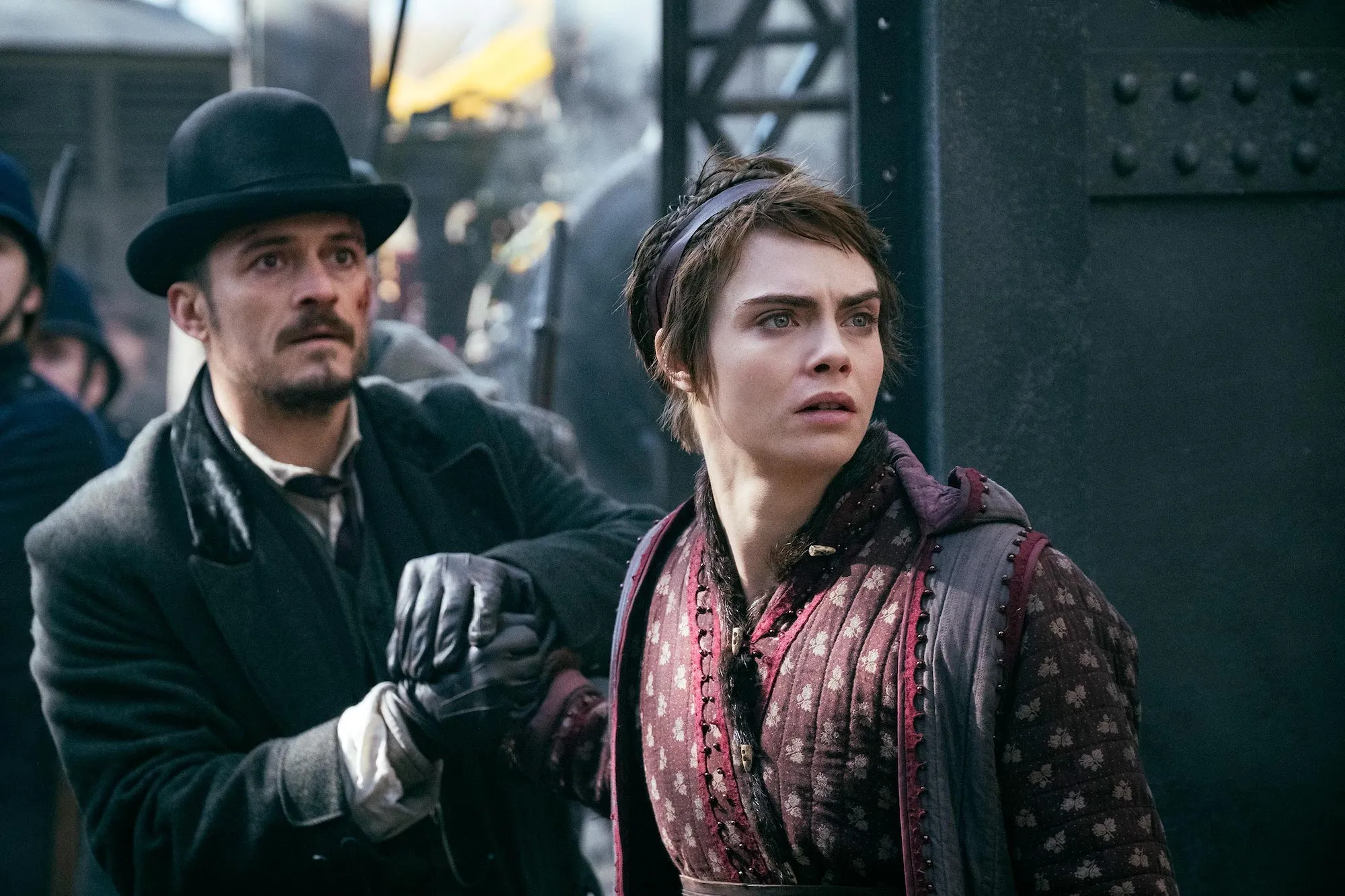
The Intricate Plot and Diverse Cast
At the heart of “Carnival Row” are the intertwined destinies of Philo, a human detective with a mysterious past, and Vignette, a fae refugee and Philo’s former lover. Their complex relationship, set against the backdrop of a series of brutal murders, political corruption, and the social turmoil of The Burgue, drives the series forward.
The diverse cast of characters, from powerful politicians to exploited fae workers, adds depth to the story, each contributing to the tapestry of intrigue and resistance that defines the series.
Visual Splendor and Atmospheric Storytelling
The visual presentation of “Carnival Row” is stunning, capturing the essence of a Victorian fantasy world with meticulous detail. From the cobblestone streets lit by gas lamps to the opulent attire of The Burgue’s elite, the series is a feast for the eyes.
The atmospheric setting, combined with the show’s dark, moody tone, creates an immersive experience that transports viewers to a world that is both familiar and entirely new.
The use of practical effects and CGI to bring the fae and other mythical beings to life adds a layer of authenticity to the fantasy, making the world of “Carnival Row” as believable as it is enchanting.
Reflections on Society and Humanity
What sets “Carnival Row” apart is its willingness to tackle complex social issues within the framework of its fantasy narrative. The series not only entertains but also challenges viewers to reflect on the nature of prejudice, the cost of progress, and the meaning of humanity. By weaving these themes into the fabric of its story, “Carnival Row” transcends the boundaries of genre, becoming a poignant commentary on the human condition.

As “Carnival Row” continues to captivate audiences in 2024, it remains a testament to the power of fantasy to illuminate the realities of our world. Through its compelling characters, intricate plot, and rich thematic exploration, the series invites viewers on a journey that is as intellectually stimulating as it is visually spectacular. In the realm of fantasy television, “Carnival Row” stands as a beacon of innovative storytelling, offering a glimpse into a world where the struggles for acceptance, love, and justice transcend the boundaries of reality.
In Conclusion
As we conclude our journey through the rich tapestry of fantasy series that have risen in the wake of “Game of Thrones,” it’s evident that the landscape of television has been irrevocably changed by its legacy. The shows we’ve explored, from the magical realms of “The Witcher” to the Victorian streets of “Carnival Row,” represent more than just entertainment; they are a reflection of our collective desires, fears, and aspirations. They serve as mirrors to our world, distorting yet revealing the complexities of human nature, the struggle for power, and the quest for identity in the face of adversity.
The diversity of themes and worlds in these series underscores the expansive potential of the fantasy genre to explore and express a wide range of human experiences. Whether it’s through the political machinations of “House of the Dragon,” the existential questions raised by “His Dark Materials,” or the exploration of cultural identity and belonging in “The Mandalorian,” these series invite viewers to engage with ideas that are both timeless and timely. They challenge us to think critically about issues such as authority, morality, and the impact of colonialism while also offering escape into worlds of wonder and magic.
With our exploration of these ten remarkable shows complete, it’s clear that the legacy of “Game of Thrones” lives on, inspiring a new generation of storytelling that captivates, challenges, and entertains. Each series, with its unique world, complex characters, and thematic depth, offers viewers an escape into realms of endless possibility.
As we look forward to what the future of fantasy television will bring, these shows remind us of the power of narrative to reflect, reshape, and enrich our understanding of the world around us.


